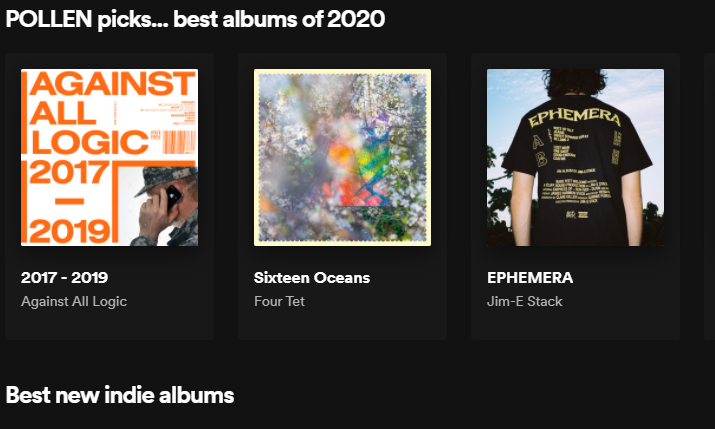I’ve been doing some spring cleaning this October, and have been reorganizing the way I listen to my Apple Music library. And it hit me that the way I, and most people my age, organize songs into a genre or mood based playlist that we can carry around in our pockets would not have been possible 15 years ago. Playlists as not just a way of listening but as an art form are so ubiquitous now that they’re just a fact of life, a noun that we all use. Both Google search trends and mentions of the word in books actually peaked in the late 2000s to early 2010s, right around the time Spotify was really entering the public consciousness. So despite the fact that we’re using playlists more than ever, we think about the fact that we use them less, you just throw one together without considering what the alternative might be.
This massive trend has completely reshaped how the music industry presents itself to the listener, with a varying degree of subtlety. The biggest albums of the year now see a 20+ song tracklist as a bare minimum, with more songs meaning a guaranteed increase in streams regardless of the average quality of the record. Even with records that stay around my personal sweet spot of 10-15 songs, I find myself listening through once, seeing which songs really stand out to me, and then extracting those to a playlist whose theme fits the music of that artist, something I explored as well in my review of latest album by TORRES.
This approach to listening to music has its pros and cons. For one, I don’t really get a chance to have an album and all of its quirks really grow on me unless it’s already an album I really liked being revisited and becoming an album I love. “Suck It And See” from Arctic Monkeys is an album that transcended the way I’ll often leave the album behind; it went from being a cover I would see when the few songs I had from it played off my Arctic Monkeys playlist to being one of my favorites of the last decade. But the reason I went back and got to connect with the album is because Arctic Monkeys have been my favorite artist since sophomore year of high school, and I can only imagine how many albums that, had I been willing to give them another chance, would have become an integral part of my memories the way my favorite albums have.
On the flip side, I find playlists make for a more consistent listening experience on a day to day basis, especially when I just want to get something done and music isn’t my main focus at the time. Very few albums have zero filler, but all those hours spent perfectly sculpting a playlist late at night pay off when you’re doing homework and don’t need to switch through five windows to find the music player to skip a mediocre track. Your personal playlist is ideally nothing but battle-tested songs that will always come through. There’s a level of artistry involved too; building smaller playlists and carefully choosing which songs make the cut lets me engage with music in a way I wouldn’t be able to otherwise.
Playlists have also become a way of discovering music that’s very interesting to think about. Discover Weekly on Spotify is a lot of people’s go to for finding new songs they would probably like, but all streaming services have pre-made playlists that fit specific moods to draw from as well. Finding new music has less of a barrier in front of it than ever before, a new song is no longer an individual financial investment, like buying a record or downloading an individual iTunes track. On the contrary, if you’re paying for Spotify Premium, you want to get the most out of your monthly subscription and listen to as much as possible.
Being able to look at a homepage of a streaming service and seeing an algorithmically curated “for you” section in some ways lets individual listeners have more power over how they listen to music, but in other ways little has changed from when record companies started to dominate the industry. Algorithmically generated is key here, platforms can get you listening to a lot of music in a very narrow breadth within a wider genre or subgenre without ever having to leave one’s auditory comfort zone. Also many of those genre playlists on Spotify have their slots bought and paid for by record companies to promote their new material anyways, making music discovery in some ways no more organic than in the past, just with a new coat of paint.
Pros and cons aside, playlists aren’t going anywhere. Spotify has more than 30 million new listeners worldwide since 2020 and it’s not alone in this wider industry trend. As someone who grew up in the streaming era, I’ve never known life without them and I’m always looking for the next song to really tie the whole playlist together. I just have to make sure I know why my listening habits are the way they are, and to never listen to an album on shuffle.
-Erie

